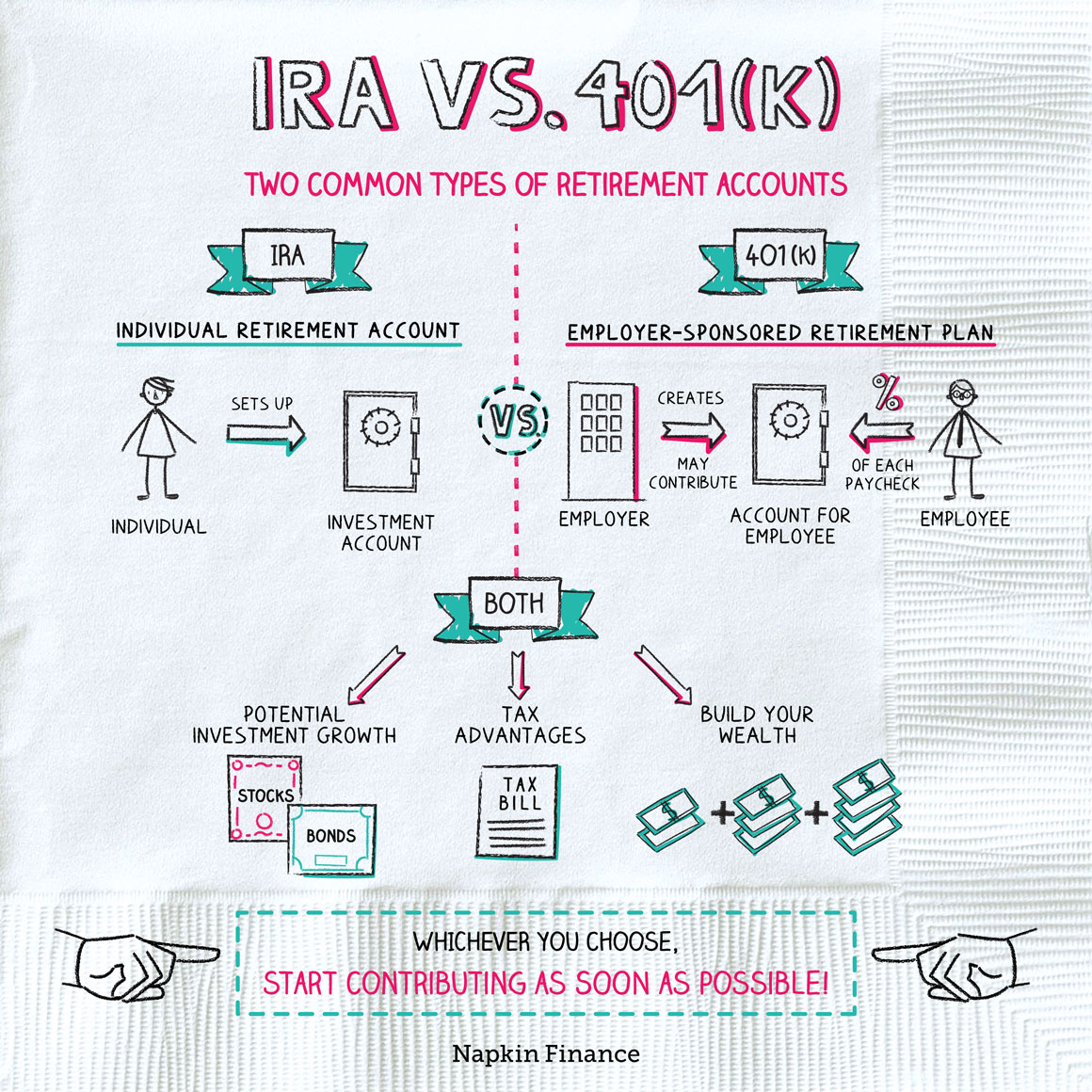When it comes to saving for retirement, two popular options that come to mind are 401(k) and Individual Retirement Accounts (IRAs). Both plans offer tax benefits and help individuals build a nest egg for their golden years. However, they have distinct differences in terms of eligibility, contribution limits, investment options, and flexibility. In this article, we will delve into the details of 401(k) and IRA plans, highlighting their pros and cons, to help you make an informed decision about which one is best for your retirement needs.

What is a 401(k) Plan?
A 401(k) plan is a type of employer-sponsored retirement plan that allows employees to contribute a portion of their salary to a tax-deferred investment account. The plan is named after the relevant section of the U.S. tax code. Contributions are made before taxes, reducing an employee’s taxable income for the year. The funds grow tax-free until withdrawal, at which point they are taxed as ordinary income.
What is an IRA?
An Individual Retirement Account (IRA) is a self-directed retirement savings plan that allows individuals to set aside a portion of their income for retirement. There are two main types of IRAs: Traditional IRA and Roth IRA. Contributions to a Traditional IRA are tax-deductible, while contributions to a Roth IRA are made with after-tax dollars. In both cases, the funds grow tax-free, but the tax implications upon withdrawal differ.
Key Differences Between 401(k) and IRA
- Eligibility: 401(k) plans are typically offered by employers to their employees, while anyone with earned income can open an IRA.
- Contribution Limits: The contribution limit for 401(k) plans is generally higher than that of IRAs. In 2022, the limit for 401(k) plans is $19,500, while the limit for IRAs is $6,000.
- Employer Matching: Many employers offer matching contributions to 401(k) plans, which can significantly boost an employee’s retirement savings. IRAs do not offer employer matching.
- Investment Options: 401(k) plans typically offer a range of investment options, such as mutual funds, stocks, and bonds, while IRAs may have more flexibility in terms of investment choices.
- Flexibility: IRAs generally offer more flexibility in terms of withdrawals and investment options, while 401(k) plans may have more restrictive rules and penalties for early withdrawals.
- Loan Provisions: 401(k) plans often allow participants to take loans from their accounts, while IRAs do not offer loan provisions.
- RMDs: Required Minimum Distributions (RMDs) are mandatory withdrawals from retirement accounts starting at age 72. 401(k) plans and Traditional IRAs require RMDs, while Roth IRAs do not.
Pros and Cons of 401(k) Plans
Pros:
- Higher contribution limits
- Employer matching contributions
- Loan provisions
- Variety of investment options
Cons:
- May have limited investment options
- Early withdrawal penalties
- RMDs required starting at age 72
- May have administrative fees
Pros and Cons of IRAs
Pros:
- Flexibility in investment options
- No employer required
- No RMDs for Roth IRAs
- Portability
Cons:
- Lower contribution limits
- No employer matching
- Income limits for deductibility
- No loan provisions
Which One is Right for You?
If you’re eligible for a 401(k) plan through your employer, it’s often a good idea to take advantage of it, especially if your employer offers matching contributions. However, if you’re not eligible or prefer more flexibility in your retirement savings, an IRA may be a better option.
Consider the following scenarios:
- If you’re self-employed or a freelancer, an IRA may be a more suitable choice.
- If you’re looking for higher contribution limits and employer matching, a 401(k) plan is likely the better option.
- If you prioritize flexibility and portability in your retirement savings, an IRA may be more appealing.
Frequently Asked Questions (FAQs)
- Can I have both a 401(k) and an IRA?
Yes, you can have both a 401(k) and an IRA. However, your ability to deduct IRA contributions may be limited if you’re eligible for a 401(k) plan. - What happens to my 401(k) if I leave my job?
When you leave your job, you may have the option to roll over your 401(k) into an IRA or to a new employer’s 401(k) plan. - Can I withdraw money from my IRA or 401(k) at any time?
While you can withdraw money from your IRA or 401(k) at any time, you may be subject to penalties, taxes, and fees. - How do I choose between a Traditional IRA and a Roth IRA?
Consider your current tax bracket and whether you expect to be in a higher or lower tax bracket in retirement. If you expect to be in a higher tax bracket, a Roth IRA may be a better choice. - Can I convert my 401(k) to an IRA?
Yes, you can convert your 401(k) to an IRA through a rollover. This can help you consolidate your retirement accounts and gain more flexibility.
Conclusion
In conclusion, both 401(k) and IRA plans offer tax benefits and can be effective tools for saving for retirement. The key differences between the two plans lie in eligibility, contribution limits, investment options, and flexibility. By considering your individual circumstances, financial goals, and priorities, you can make an informed decision about which plan is best for you.
Ultimately, it’s essential to take advantage of the retirement savings options available to you, whether it’s a 401(k) plan, an IRA, or both. By starting early, contributing regularly, and being mindful of the fees and rules associated with each plan, you can build a comfortable nest egg for your retirement years.
Remember, saving for retirement is a long-term strategy, and it’s essential to be patient, disciplined, and informed. By doing your research, seeking professional advice when needed, and staying committed to your goals, you can create a secure and prosperous financial future.
Closure
Thus, we hope this article has provided valuable insights into 401(k) vs IRA: A Comprehensive Comparison. We thank you for taking the time to read this article. See you in our next article!